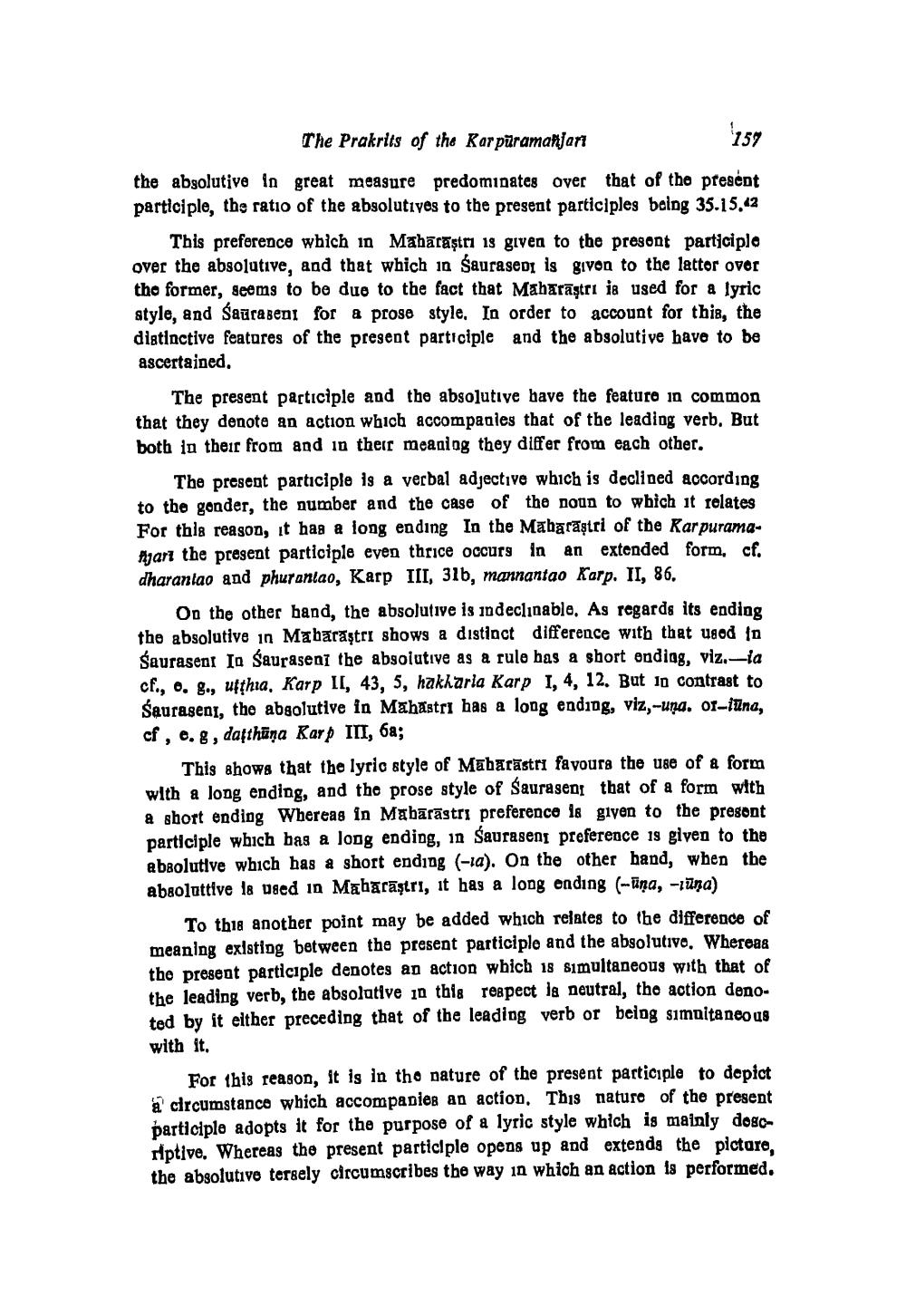________________
The Prakrits of the Kar pūramaħjant
159
the absolutive in great measure predominates over that of the present participle, the ratio of the absolutiyes to the present participles being 35.15.2
This preference which in Maharastri is given to the presont participle over the absolutive, and that which 10 Śaurasep is given to the lattor over the former, seems to be due to the fact that Maharastrı is used for a lyric style, and Saurabent for a proge style. In order to account for this, the distinctive features of the present participle and the absolutive have to be ascertained.
The present participle and the absolutive have the featuro in common that they denote an action which accompanies that of the leading verb. But both in their from and in their meaning they differ from each other.
The present participle is a verbal adjective which is declined according to the gonder, the number and the case of the noun to which it relates For this reason, it has a long ending In the Mabarāştri of the KarpuramaAart the present participle even thrice occurs in an extended form, cf, dharantao and phuronlao, Karp III, 31b, mannantao Karp. II, 86.
On the other hand, the absolutive is indeclinable. As regards its ending the absolutive in Mabaraştri shows a distinct difference with that usod in Saurasent In Saurasen; the absolutive as a rule bas a short ending, viz.-ia cf., o. g., uftha, Karp II, 43, 5, hakharia Karp I, 4, 12. But in contrast to Sauraseni, the absolutive in Mahastri has a long ending, viz,-una. of_iūna, cf, 0.8, dafthūna Karp III, 6a;
This ahows that the lyric style of Mabarastrı favours the use of a form with a long ending, and the prose style of Sauraseni that of a form with a short ending Whereas in Mabarastrı preference la given to the pregont participle which has a long ending, in Sauraseni preference is given to the absolutive which has a short ending (-a). On the other hand, when the absoluttive 18 used in Maharāştri, it has a long ending (-ūņa, -rūna)
To this another point may be added which relates to the difference of meaning existing between the present participle and the absolutivo. Whereas the present participle denotes an action wbich 18 simultaneous with that of the leading verb, the absolative in this respect la neutral, the action denoted by it either preceding that of the leading verb or being simnitaneous with it.
For this reason, it is in tho nature of the present participle to depict a circumstance which accompanies an action. This nature of the present participle adopts it for the purpose of a lyric style which is mainly dogcHptive. Whereas the present participle opens up and extends the picture, the absolutive tersely circumscribes the way in which an action is performed.




